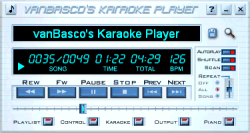This year, I think the best new software on the music education scene is PROTÉGÉ , From NOTION Music. This is a program with the emphasis on real music! The range of features and ease of use is quite remarkable for a product in this price range (under £50) and it makes a really useful set of tools available to beginner and expert alike.
PROTÉGÉ is, first of all, score-writing software. In this respect, it has features one would normally only expect at the top end of the market and shows a real appreciation of composers’ needs. Yet, methods of inputting and playing music are easy to grasp, with the most common requirements conveniently to hand in the initial side-bar setting. Consequently, beginners are not confused by too many options, although these are available to the advanced user. A tutorial is available, designed to enable pupils, including those who have only a minimal aquaintance with standard notation, to learn to use the software when the need arises and they are, consequently, most motivated to do so. It introduces elements of notation, along with the ways in which they are entered into a score, in the order they are most likely to be required.
A big selling point is the set of onboard sounds -instruments played by members of the London Symphony Orchestra and recorded at Abbey Road Studios. For those who don’t have external studio equipment, the package is well worth the purchase price just to have access to sounds of this quality. Dynamics, articulations and performance techniques will play back with the utmost realism.
The NTempo performance feature allows pupils to have real-time control over tempo, including rubato, fermatas and breath marks. This also makes PROTÉGÉ a very useful resource for instrumental teachers, enabling them to provide an accompaniment without distraction from the pupil’s performance.
After my own company’s MIDIgrid and GridPlay software, I consider this to be the most creative music education resource around. Visit www.notionmusic.com to learn more.

